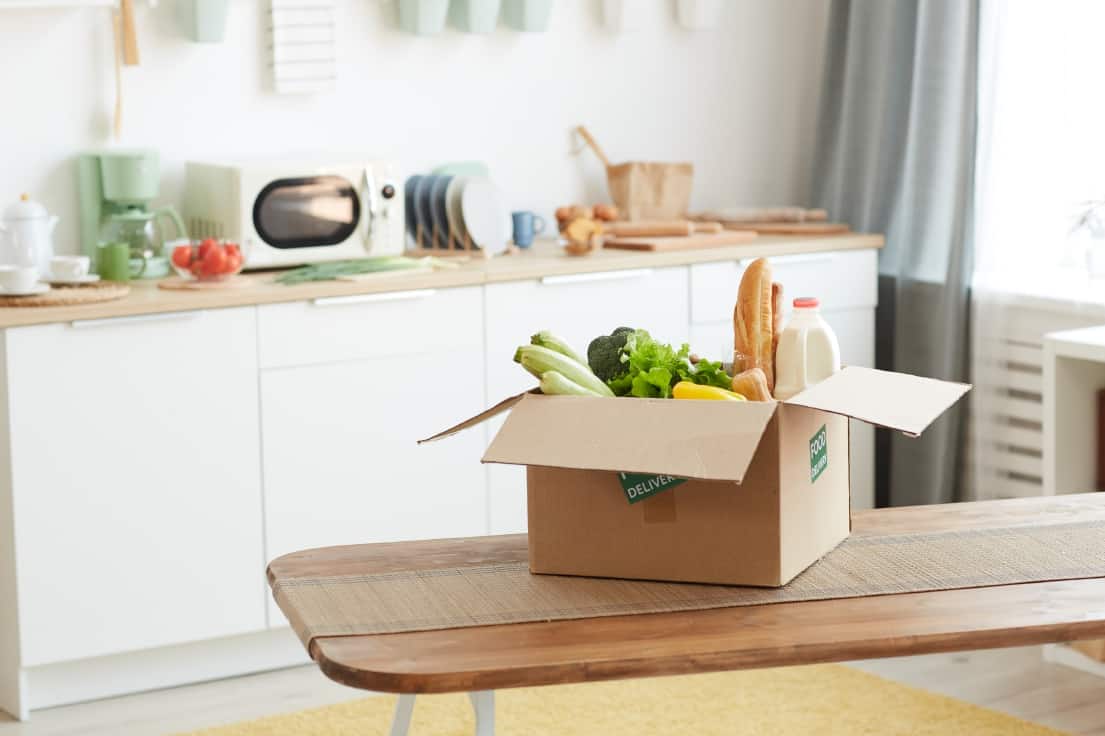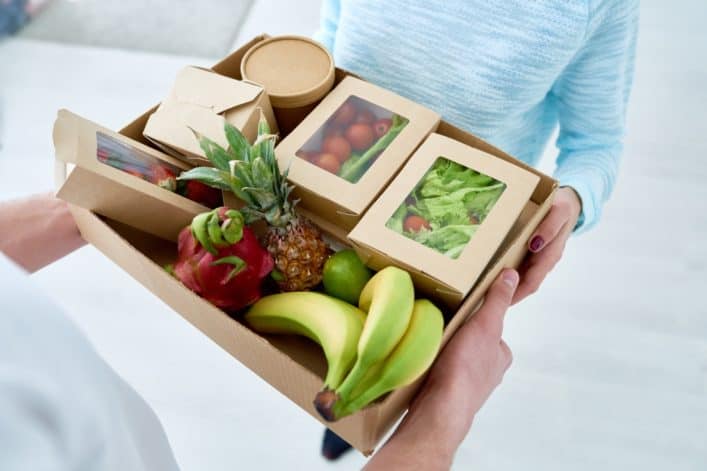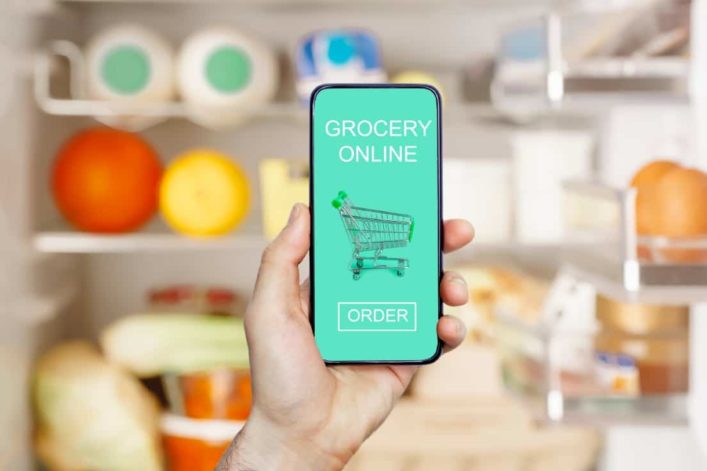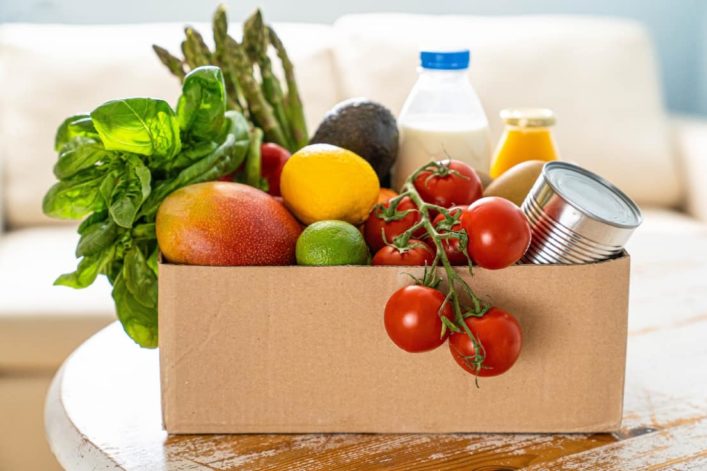How To Start A Grocery Delivery Business: Steps To Create Your Successful Service
Starting your own grocery delivery business is a great way to make money while helping people save time.
It can be difficult to find the time to go grocery shopping, especially if you have a busy schedule.
That’s where your online shopping service comes in!

In this blog post, I’ll discuss the steps that you need to take to create a successful grocery delivery business.
This post is for general informational and educational purposes only. You can read the full disclaimer for more information.
What are the benefits of starting a grocery delivery business?
The benefits of starting a grocery delivery business are many. Perhaps the most obvious benefit is that you can make money while helping people save time.
In addition, a grocery delivery business can be a great pairing with the health and fitness industry.
As a health and wellness coach, your business model could include the selection of grocery items for clients as part of a meal planning service. Or if you have a passion for food and cooking, this could be the perfect business for you!
Another benefit of starting a grocery delivery business is that you can be your own boss. You’ll have the freedom to set your own hours and work from home.
This can be a great way to earn extra income or even replace your full-time income!
Big players like Postmates and Instacart are great examples of businesses that have found success in the grocery delivery space.
The key to starting a successful grocery delivery business is to find your niche and market to it well.
Grocery delivery companies like Thrive Market cater to those looking for best-in-class organic goods available at competitive prices.
While Imperfect Foods is founded on a mission to reduce food waste. They deliver ‘imperfect’ but perfectly good food that would otherwise go to waste.
Whatever your target market starting a grocery delivery business is a great way to make money while helping your community.
Research the industry and competition
The first step to starting any business is researching the industry and your competition. With the rise of online grocery shopping, there are more options for consumers than ever before.
It’s important to understand the landscape before you start your own grocery delivery company.
Some key questions to ask when researching profitable business ventures in the online grocery delivery industry are:
- What services do they offer and to who?
- What are their delivery fees?
- Is there a minimum amount for delivery?
- What’s their average order size?
- What are the most popular items they deliver?
- Do they charge a membership fee or subscription fee?
After you’ve done your market research, you should have a good understanding of what services your competitors offer and how much they charge.
You’ll also have an idea of what items and grocery vendors are most popular among consumers. This information will be helpful as you start to formulate your own business plan.
Draft a business plan
Now it’s time to start drafting your business plan. Your business plan should include the following important features:
- Executive summary– In a few words tell your reader what your company does and why it exists. Share information about your company’s leadership and location.
- Company description– Provide details about who your company plans to serve and what problem(s) you’ll solve. Describe the organizations you plan to partner with.
- Market analysis– Get a solid understanding of the industry. Find out what’s working well for your competitors. Can you deliver the same result in a more efficient manner?
- Organization and management– Describe your company’s structure and who will manage it. Include details about its legal structure. Use an organizational chart to show where each person will contribute.
- Service or product line– Describe the goods or services you’ll provide. Explain how it helps your customers and how the product lifecycle works. Do you plan to file a copyright or patent application?
- Marketing and sales– Outline your marketing strategy. Describe how you’ll attract and retain customers. You’ll also describe how a transaction will take place in reality.
It should also include financial projections for your first year of business. This will be helpful if you plan to secure funding for your new venture.
If you’re not sure where to start, there are plenty of resources available to help you draft a business plan. The Small Business Administration (SBA) is a great place to start. They offer free templates and resources that can help you get started.
Register your business
You’ll need to decide on a legal structure for your business. Will you have a sole proprietorship, limited liability company (LLC), partnership, or corporation?
Each has its own set of pros and cons. You should consult with an accountant or attorney to help you decide which is best for your business.
Choose a name for your business and register your business to make it a distinct legal entity. You can also choose to trademark your business name and logo.
Other items include obtaining an Employer Identification Number (EIN), business license, business bank account, business insurance, and possibly commercial auto insurance.
What do you need to start a grocery delivery business?
Now that you know how to start a food delivery business, it’s time to get started! You’ll need a few things before you can get started.
First, you’ll need a vehicle. This can be anything from a car to a van or truck. If you don’t have a personal vehicle that you can use for deliveries, you can always lease or rent a vehicle.
Another option is a bike or scooter if you’re only delivering a few items at a time. Just make sure you have the proper insurance for whatever mode of transportation you choose.
If you plan to cover large service areas you could hire delivery drivers. Just remember they too will need to have insurance.
Next, you’ll need to get some basic supplies, like bags, boxes, coolers, crates, or bins to carry deliveries. You’ll also need some form of GPS or navigation system to help you get around town.
The best way for customers to place orders is through an online platform. This can be as simple as a website or Facebook page, or you can use existing online grocery delivery services.
You could also hire a development company to create an app for your grocery delivery startup.
How to set up your delivery service?
First, you’ll need to create a website or online shopping platform. This will be the foundation of your business and where customers will go to place orders.
There are a few different ways to set up your website. You can use a platform like Shopify, which offers templates and hosting, or you can create your own website from scratch.
Wix and Squarespace are also popular options.
Once orders are placed, you’ll need to set up a delivery schedule. This will help you stay organized and ensure that orders are delivered on time.
You want to provide a good customer experience. This would be hard to do if you’re unable to deliver their fresh produce or perishable items in a timely manner.
To help with this, you can create a delivery route. This way you make all of your deliveries in the most efficient way possible.
There are a few different ways to do this. You can use a paper system, like a notebook or spreadsheet, or an online system.
You can use mobile applications like Detrack or Route4Me to help plan the most efficient delivery routes, offer live tracking, and provide proof of the delivery of groceries.
To get started with a more cost-effective option, you can also use apps like Google Maps or Waze to help you plan routes for home delivery.
Remember to stay organized and keep track of everything, so you can keep your business running smoothly.
Efficient and effective management is key to any successful business, but it’s especially important for a delivery service. You need to be able to stay organized and keep track of orders, customers, and deliveries.
If you’re operating your business just within your local community you may be able to take phone orders. This would be especially helpful for senior citizens who are less likely to be online shoppers.
Or you can speak with the business owners of your local grocery store or food co-op to see if seniors may call to place orders directly with them. You would then pick up the groceries to deliver.
How to price your service?
Pricing your service is one of the most important aspects of starting a grocery delivery business. You need to make sure you’re charging enough to cover your costs and have good profit margins. But you don’t want to price yourself out of the market.
A good place to start is to research your competition and see what they’re charging. This article compares some of the popular delivery services for you. You can also use a pricing calculator to help you determine your rates.
Remember to factor in the cost of gas, vehicle maintenance, and other expenses when setting your prices. You should also consider offering discounts for larger orders or for customers who are loyal to your business.
Consider starting a membership or delivery club. This could include a monthly or annual fee that entitles members to free or discounted delivery fees.
Market your grocery delivery business and attract customers
When it comes to marketing your grocery delivery business, you don’t have to spend a lot of money. In fact, there are many free ways to promote your service.
Use online advertising to create a Google My Business listing and make sure your business is included in relevant directories.
You can also use social media platforms, like Facebook, to create an online presence and tell people about your new service.
SEO is also important for getting your website seen by potential customers. Make sure to use relevant keywords on your website and in online directories.
Consider your target audience and where they’re likely to look for information about grocery delivery services. You can then tailor your marketing strategy to reach your customer base where they’re most likely to see it.
You can also use traditional marketing techniques, like flyers and newspaper ads. And don’t forget to tell your friends and family about your new business!
Start spreading the word about your business by creating a marketing plan and materials and reaching out to your community. You can also offer discounts or free delivery to attract new customers.
By using a combination of these marketing strategies, you’ll be sure to attract new customers and grow your grocery delivery business.
How to start a grocery delivery business takeaways
To sum up, there are a few things you need to do to start a successful grocery delivery business.
You need to be organized and efficient, so you can keep track of everything. It’s also important to price your service competitively.
And you can use a variety of marketing techniques to attract new customers.
Once you have all of these things in place, you’re ready to start taking orders and delivering groceries!
By following these tips, you’ll be well on your way to starting a successful grocery delivery business.
Just remember to start small and grow your business gradually. With a little hard work and dedication, you can make your delivery service thrive.
Do you have any tips for starting a grocery delivery business?
Let us know in the comments below. I’d love to hear from you!












